flusher
Super Member
- Joined
- Jun 4, 2005
- Messages
- 7,555
- Location
- Sacramento
- Tractor
- Getting old. Sold the ranch. Sold the tractors. Moved back to the city.
I've finally gotten around to calibrating my restored Minneapolis Moline P3-6 grain drill (10 ft wide, 20 drops, 6" spacing, single disc openers, flute-style feed cups).
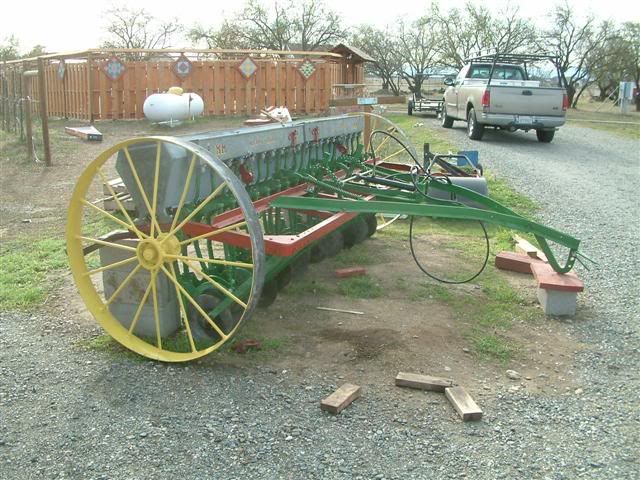
It rides on steel wheels (46" dia, 12 ft circumference). The wheel and feed axles are split -- 10 feed cups per axle, so you calibrate half (5 ft) of the grain drill at a time. Spinning the wheel 72.3 revs corresponds to 0.1 acre coverage (a strip 5' wide by 12x72.3=867.6 ft long). I'm calibrating with oats that should be sown at 100-120 lb/acre. So if I spin the drive wheel 30-70 revs, I'll deliver 5-10 lb of seed which I can measure accurately enough with my fish scale.
I jacked the drill up and set it on concrete blocks.
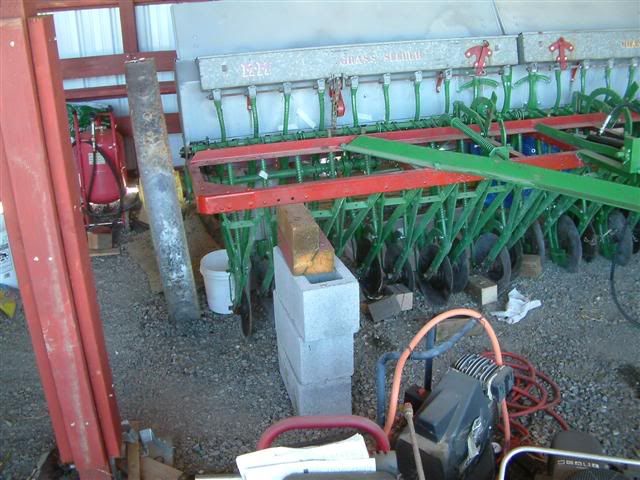
Adjusted the feed control (the green one on the left to calibrate that half of the drill). The red controls are for the two grass seed boxes that I'm not using right now.
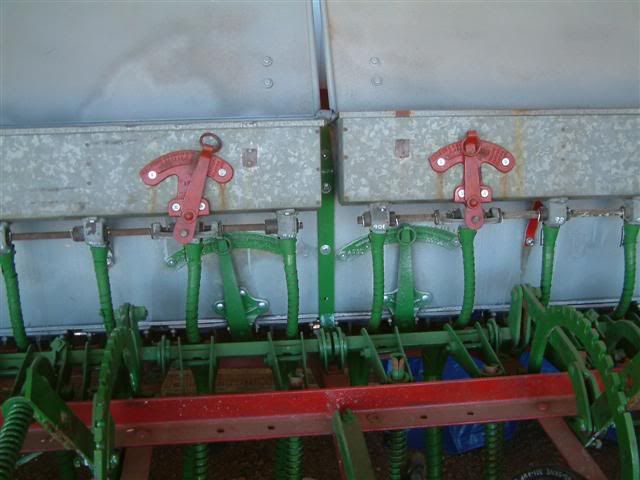
Filled the fertilizer box with oats

Set a few containers to catch the seeds as they drop
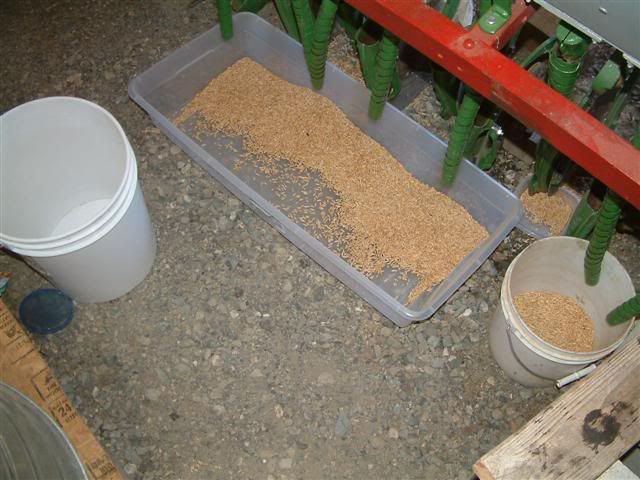
Weigh the droppings with my fish scale
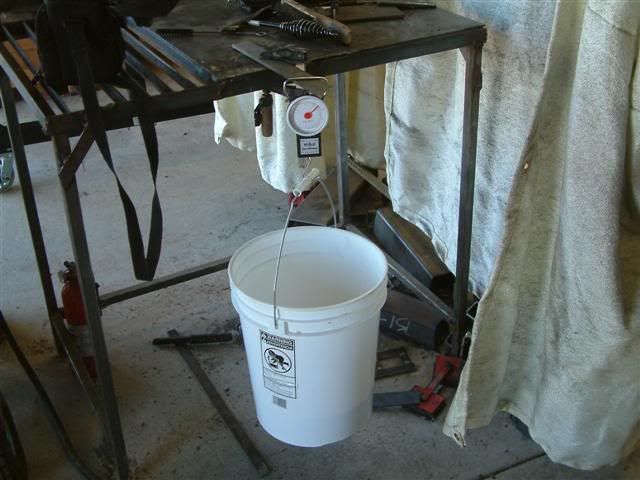
I generally do 30-70 revs of the drive wheel per run to get 6-10 lb of droppings. Easy work, but tedious.
I found that I get about 100 lb/acre with the feed control set at 25, which is what the operator manual says it should be. With the feed control wide open, I get about 180 lb/acre of seed dropped.
Next steps--calibrate with fertilizer and then repeat this process with seed and fertilizer for the other half of the drill. Fortunately, as long as I stick to oats, I won't have to repeat this tiresome procedure in my lifetime.
I've seen another method used for calibrating grain drills--put a known weight of seed in the box, pull the drill until the box is empty, measure the distance traveled. That gives you the info you need to compute lb/acre. Might be easier to do it this way. Don't know--haven't tried it.

It rides on steel wheels (46" dia, 12 ft circumference). The wheel and feed axles are split -- 10 feed cups per axle, so you calibrate half (5 ft) of the grain drill at a time. Spinning the wheel 72.3 revs corresponds to 0.1 acre coverage (a strip 5' wide by 12x72.3=867.6 ft long). I'm calibrating with oats that should be sown at 100-120 lb/acre. So if I spin the drive wheel 30-70 revs, I'll deliver 5-10 lb of seed which I can measure accurately enough with my fish scale.
I jacked the drill up and set it on concrete blocks.

Adjusted the feed control (the green one on the left to calibrate that half of the drill). The red controls are for the two grass seed boxes that I'm not using right now.

Filled the fertilizer box with oats

Set a few containers to catch the seeds as they drop

Weigh the droppings with my fish scale

I generally do 30-70 revs of the drive wheel per run to get 6-10 lb of droppings. Easy work, but tedious.
I found that I get about 100 lb/acre with the feed control set at 25, which is what the operator manual says it should be. With the feed control wide open, I get about 180 lb/acre of seed dropped.
Next steps--calibrate with fertilizer and then repeat this process with seed and fertilizer for the other half of the drill. Fortunately, as long as I stick to oats, I won't have to repeat this tiresome procedure in my lifetime.
I've seen another method used for calibrating grain drills--put a known weight of seed in the box, pull the drill until the box is empty, measure the distance traveled. That gives you the info you need to compute lb/acre. Might be easier to do it this way. Don't know--haven't tried it.
